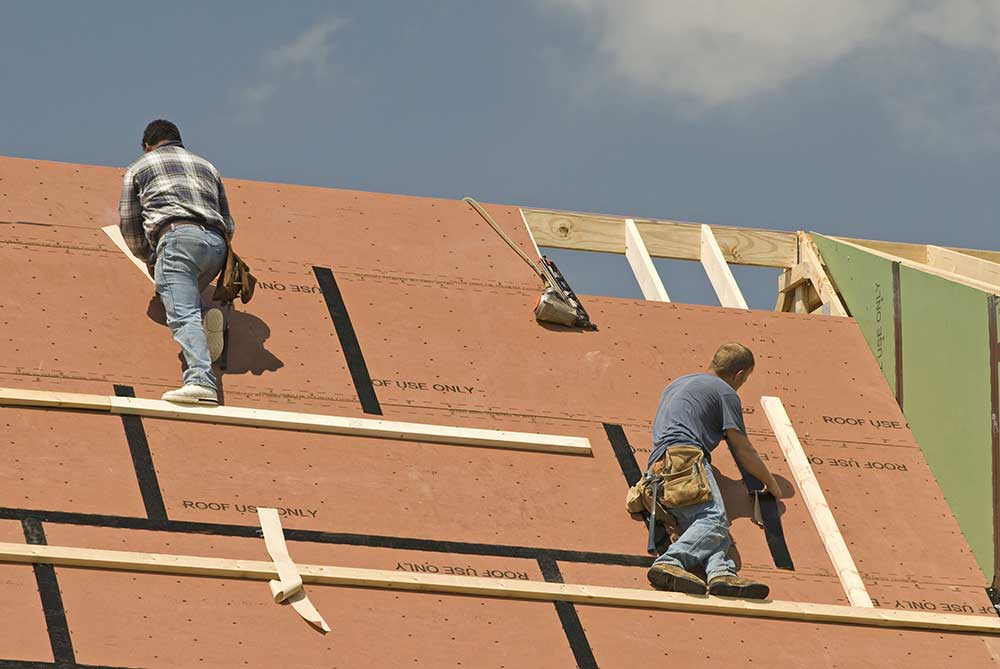Disclaimer: The information on our website is provided for general information purposes only. We make no representations or warranties of any kind, express or implied, about the completeness, accuracy, reliability, suitability or availability with respect to the website or the information contained on our website for any purpose. Any reliance on such information is therefore strictly at your own risk and we are not liable for any damages or losses arising out of or resulting from your reliance on any information contained on our website.
A roofer repairs and installs roofs on all types of buildings, whether they be residential or business. They also must understand how to skillfully fix, replace, or install roofs of various materials such as shingles, metal, and even terracotta. This is a very physically demanding job and roofers must be comfortable working high off the ground.
Watch a video to learn what a roofer does:
How to Become a Roofer
There is no set educational requirement to become a roofer and most learn on-the-job. When on the job, experienced roofers would show you how to use the roofing equipment and you would be given basic tasks such as carrying and fetching equipment. After a few months, you would begin learning how to measure the materials and then fit and lay the roofing material. There are many types of roofs, so you may learn additional types of roofing on-the-job throughout your career.
There are also apprenticeship programs you may find in your area. These may last 3 years with the goal of ensuring you complete the program as a highly-skilled roofer. To view information about an example apprenticeship program, you can check out the IRCC website (link opens in a new tab). The IRCC is a not-for-profit professional association of California roofing contractors whose mutual aims include:
Job Description of a Roofer
A roofer will inspect a roof to determine the best way to fix or replace the roof. They would need to consider the safest way to install the roof as well, whether that be setting up shingles and wearing safety harnesses in case there is a fall. The way the repair or install a roof depends on the material the roof is constructed of. More experienced roofers would know how to properly install various types of roofing material.
Depending on the roofer’s experience, they may also be responsible for meeting with clients and estimating the materials and labor necessary to complete the job. This would also include scheduling the job to take place and potentially supervising the other roofers on site.
Roofer Career Video Transcript
Roofers are the people who literally keep a roof over our heads. These workers install and repair the roofs of buildings to keep interiors dry and safe. Roofers take detailed measurements to calculate the materials needed. They lay down layers of materials to create a lasting roof cover– starting with a vapor barrier, and the roofing material a client chooses, such as asphalt, traditional— or newer solar shingles, or long-lasting metal.
Weatherproofing the seals around chimneys, vents, or other rooftop elements requires precision and spatial perception. Roofer helpers set ladders and scaffolds in place, and hoist or carry materials to roofs. They remove old roofing material, and assist roofers with roof installation and repairs. They also clean the work area and equipment.
Roofing work is physically demanding. It involves heavy lifting, as well as climbing, bending, and kneeling, often in very hot weather. Roofers work outdoors in all types of weather, and need to be comfortable working high above the ground. Most roofers work full-time, although only seasonally in colder climates and may work overtime to complete jobs quickly, especially when rain is expected.
Most roofers and helpers work in crews for roofing contractors. Roofers and helpers usually learn on the job, though some roofers learn their trade through an apprenticeship, typically a 3-year program of technical training and paid on the job training.
Article Citations
Bureau of Labor Statistics, U.S. Department of Labor, Occupational Outlook Handbook, Accountants and Auditors.
National Center for O*NET Development. 47-2181.00. O*NET OnLine.
The career video is Public Domain from the U. S. Department of Labor, Employment and Training Administration.

